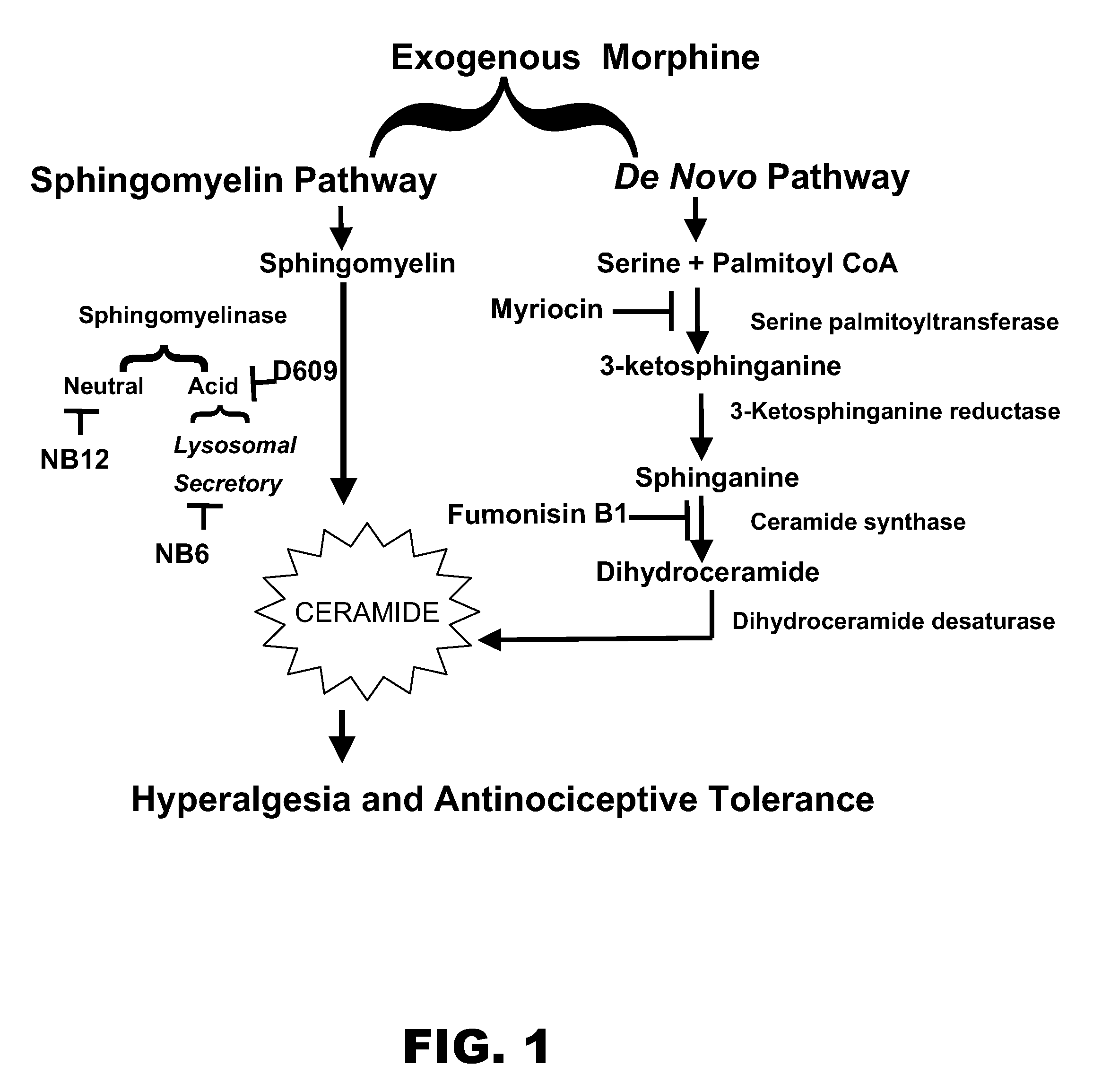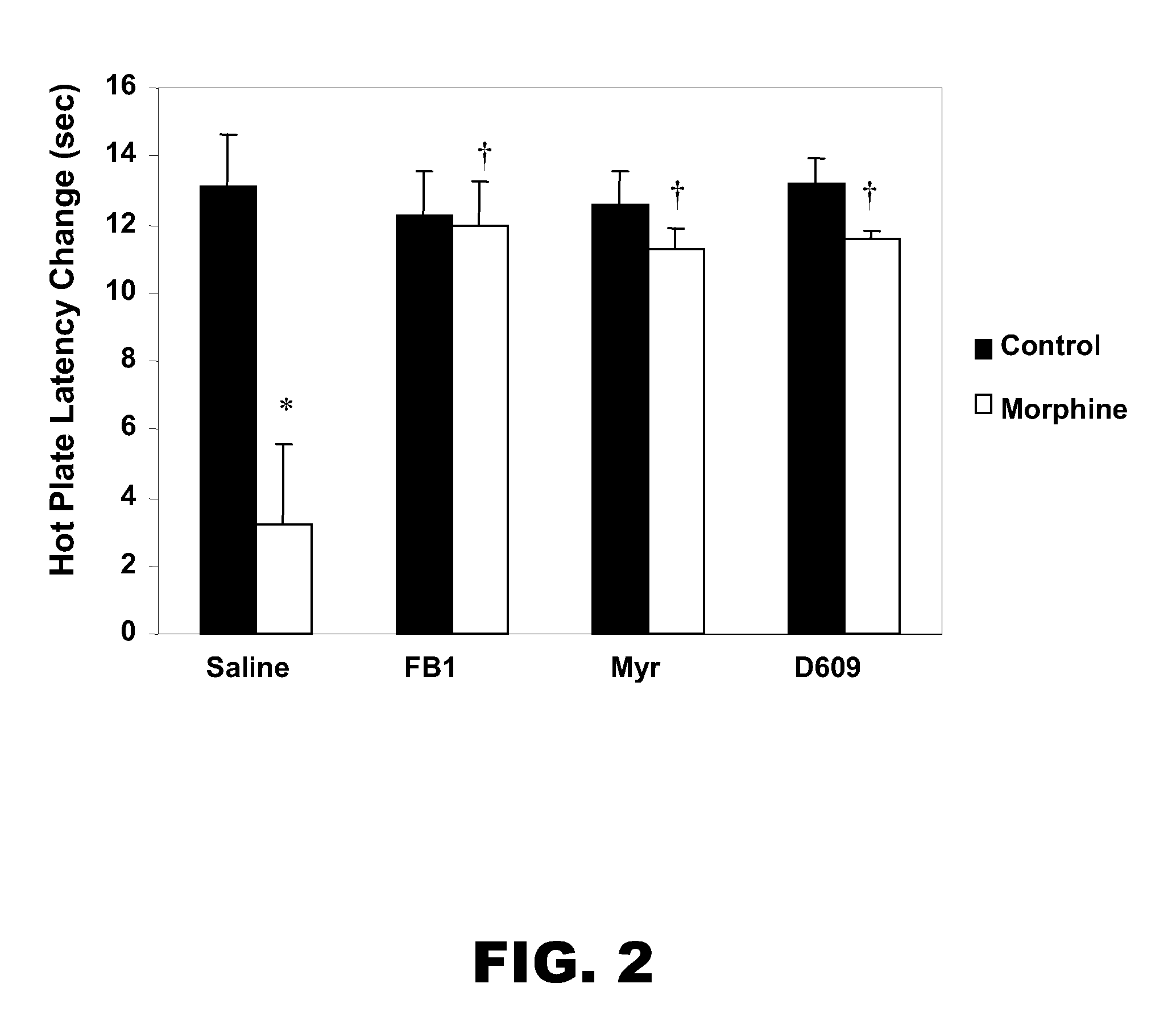Inhibitors of the ceramide metabolic pathway as adjuncts to opiates for pain
a ceramide metabolic pathway and inhibitory technology, applied in the direction of pharmaceutical active ingredients, peptide/protein ingredients, organic active ingredients, etc., can solve the problems of prolonged ceramide elevation, opiate exposure induces hyperalgesia and tolerance remain unclear, etc., and achieve the effect of reducing ceramid
- Summary
- Abstract
- Description
- Claims
- Application Information
AI Technical Summary
Benefits of technology
Problems solved by technology
Method used
Image
Examples
examples
[0091]It was discovered that repeated administration of morphine increased levels of ceramide in the spinal cord in a murine model. Furthermore, administration of the ceramide synthase inhibitor fumonisin B1 attenuated the development of antinociceptive / analgesic tolerance. Similarly, inhibition of ceramide synthesis by D609, and myriocin, inhibitors of SMase / sphingomyelin synthase and serine palmitoyltransferase respectively, also blocked antinociceptive / analgesic tolerance.
[0092]Inhibition of Ceramide Biosynthesis Blocks Morphine Tolerance.
[0093]Repeated administration of morphine over 4 days led to the development of antinociceptive tolerance (FIG. 2; from 93±8 to 20±14% MPE for acute morphine in Control vs Morphine groups respectively (P<0.05). This was associated with the appearance of ceramide in the superficial layers of the dorsal horn as detected by immunohistochemistry using an anti-ceramide monoclonal antibody (FIG. 3). As shown by ESI-MS / MS, the predominant ceramide spec...
PUM
| Property | Measurement | Unit |
|---|---|---|
| flow rate | aaaaa | aaaaa |
| pressure | aaaaa | aaaaa |
| collision energy | aaaaa | aaaaa |
Abstract
Description
Claims
Application Information
 Login to View More
Login to View More - R&D
- Intellectual Property
- Life Sciences
- Materials
- Tech Scout
- Unparalleled Data Quality
- Higher Quality Content
- 60% Fewer Hallucinations
Browse by: Latest US Patents, China's latest patents, Technical Efficacy Thesaurus, Application Domain, Technology Topic, Popular Technical Reports.
© 2025 PatSnap. All rights reserved.Legal|Privacy policy|Modern Slavery Act Transparency Statement|Sitemap|About US| Contact US: help@patsnap.com



